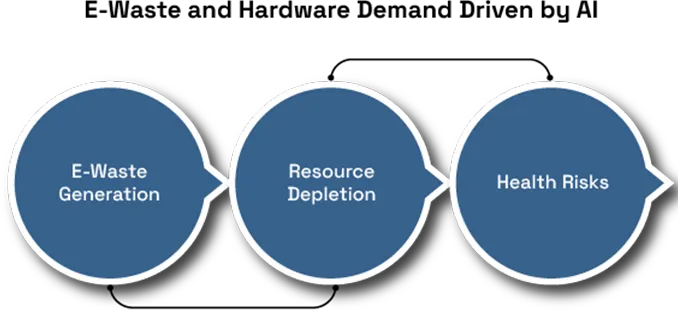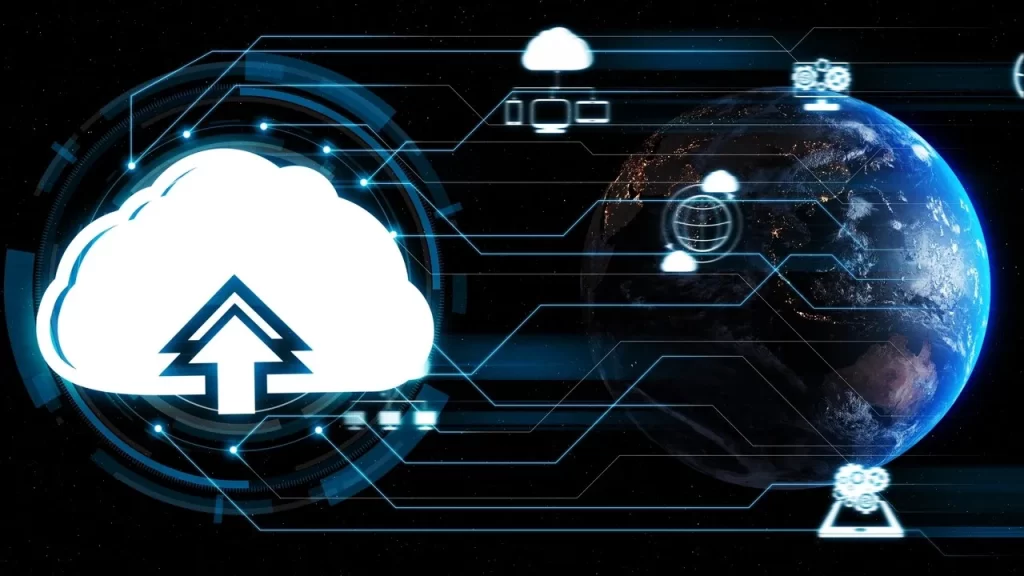Artificial Intelligence (AI) is frequently seen as a powerful tool to solve global challenges, from an adaptation of energy use to improve climate models. But there is a long-term side to AI: its increasing contribution to climate change. As the AI systems become more advanced, they require increasingly larger and difficult computing infrastructure. This growth greatly affects natural resources and results in high emissions, electronic waste, and energy usage.
1. The Carbon Footprint of AI Training Models
The process of training AI models—especially large-scale models such as GPT, BERT, and advanced image generators—requires immense computational resources. These training sessions use vast amounts of electricity, often running for days or weeks on powerful systems that consume as much energy as a household might in a year. A widely cited 2019 study found that training a single large AI model could emit over 626,000 pounds of CO₂, equivalent to the total emissions

produced by five cars over their whole lifetimes.
Despite the availability of data center optimization techniques and improvements in data center automation software, the environmental toll of training these models remains high, primarily because most data centers are still powered by fossil fuels. As major tech companies invest heavily in AI, with examples like Microsoft AI data center spending skyrocketing in recent years, the pressure on global energy resources continues to mount. While optimization and automation tools help manage power use more efficiently, they cannot offset the scale of growth in AI model complexity and demand.
2. AI and the Growing Demand for Data Centers
The fast growth of AI is closely associated with the explosion in data center construction and energy use. These cloud computing data centers are the physical homes of AI, which store, process, and transmit data around the world. AI workload driving, particularly with very high demonstrations which is responsible for using a lot of network resources. This eventually leads to high power consumption, mainly for the cooling systems that prevent the equipment from overheating.
As AI demand grows, companies are choosing colocation in the cloud, which involves renting server space in jointly owned data centers. While it usually cuts expenses, this method doesn’t always mean the business will have low carbon emissions. Some data center companies use data center automation tools to simplify operations and reduce waste, but even the most advanced systems still require huge amounts of energy. Additionally, many AI applications are deployed through colocation cloud platforms or hybrid hosting models, adding layers of infrastructure that further intensify resource use. Water usage is another major concern, with many data centers consuming millions of liters daily for cooling, affecting local ecosystems, especially in regions already facing water scarcity.
3. E-Waste and Hardware Demand Driven by AI
The hardware required to support AI technologies is another major environmental concern. AI models depend on powerful processors such as GPUs and TPUs to perform massive computations. The race to develop rapid and more efficient chips has led to a rapid hardware untouchability, frequently transformed into the search for better performance. As a result, the technical industry is creating e-waste at a dangerous rate, most of which ends up in landfills or is sent to developing countries with insufficient recycling infrastructure.
In addition, supporting AI deployments in large numbers frequently requires buying big data storage & specialized hardware systems that are usually found in server colocation or HPC data centers. Efficiency is one plus, but these facilities use materials such as lithium, cobalt, and rare earth metals, which create harm to the environment during mining. Making and disposing of AI-related devices can harm the environment and make people very sick if they’re not done safely. While data center and cloud computing providers are exploring ways to recycle components and extend hardware life cycles, the pace of AI development often makes sustainability an afterthought.

4. Unequal Carbon Burden and Global Disparities
While AI innovation gives economic and technological advantages, the environmental cost is not equally distributed around the world. Many data center companies develop features in areas with lower land and electricity costs, which are frequently powered by carbon-intensive energy sources. These areas in developing countries suffer the most from damage to the environment. including air pollution, water shortages, and noise pollution from cooling systems and power backup generators.
In addition, the export of AI hardware and e-waste adds another layer of loss in these similar countries. Without strict rules or proper settlement infrastructure, toxins from obsolete electronics leak into soil and water, posing a threat to human health and local biodiversity. This global inequality raises moral questions about who benefits from AI. Wealthy nations and corporations enjoy the benefits of advanced AI systems, while poor areas tolerate infrastructure, energy usage, and waste management costs. This uneven distribution reinforces the urgent need to rethink how cloud-based data centers and AI technologies are implemented on a global scale.
5. The Illusion of “Smart” Solutions: When AI Backfires
AI is often kept as a tool for environmental sustainability, which is used in smart energy grids, efficient logistics, and climate forecasting. However, these benefits do not always tell the whole story. Many of these so-called “green” AI applications run on infrastructures powered by fossil fuels, adding to the overall energy load. For example, while AI might optimize delivery routes or traffic flows, the increased efficiency often leads to higher usage—a phenomenon known as the rebound effect.
Furthermore, businesses that switch between colocation vs managed hosting vs cloud often prioritize flexibility and performance over sustainability. Hosting smart solutions on cloud colocation pricing models may seem cost-effective, but they still depend on energy-saving servers. These solutions can result in more problems rather than success if there is no full environmental cost-benefit analysis. It is important to determine if AI in various industries is good for the environment or simply moving issues around. Although data center firewalls and intelligent automation tools are useful, they cannot make up for the importance of using green energy and responsible AI.
Conclusion
Artificial intelligence is a promising technique, but it comes with high risks to the environment. Because of the increasing use of power in training the AI system, the need for new data center software, waste of hardware, and improper access to networks for various parts of the world, AI is involved in many ways in climate change. As AI becomes more common, it’s important to seriously ask if we are managing AI systems properly. Are data center optimization techniques and automation tools being used effectively to reduce environmental harm? And are we balancing the promise of AI with the reality of its impact?
Governments, corporations, and data center companies all need to participate in implementing sustainable AI. To do this, companies should bring in renewable sources of energy, make sure their hardware lasts and follow worldwide recycling standards. Making sure companies in the tech industry support greener AI keeps our planet from being harmed by technological advancements.








